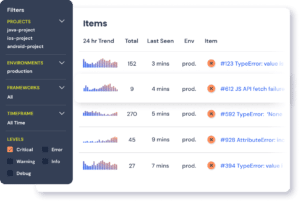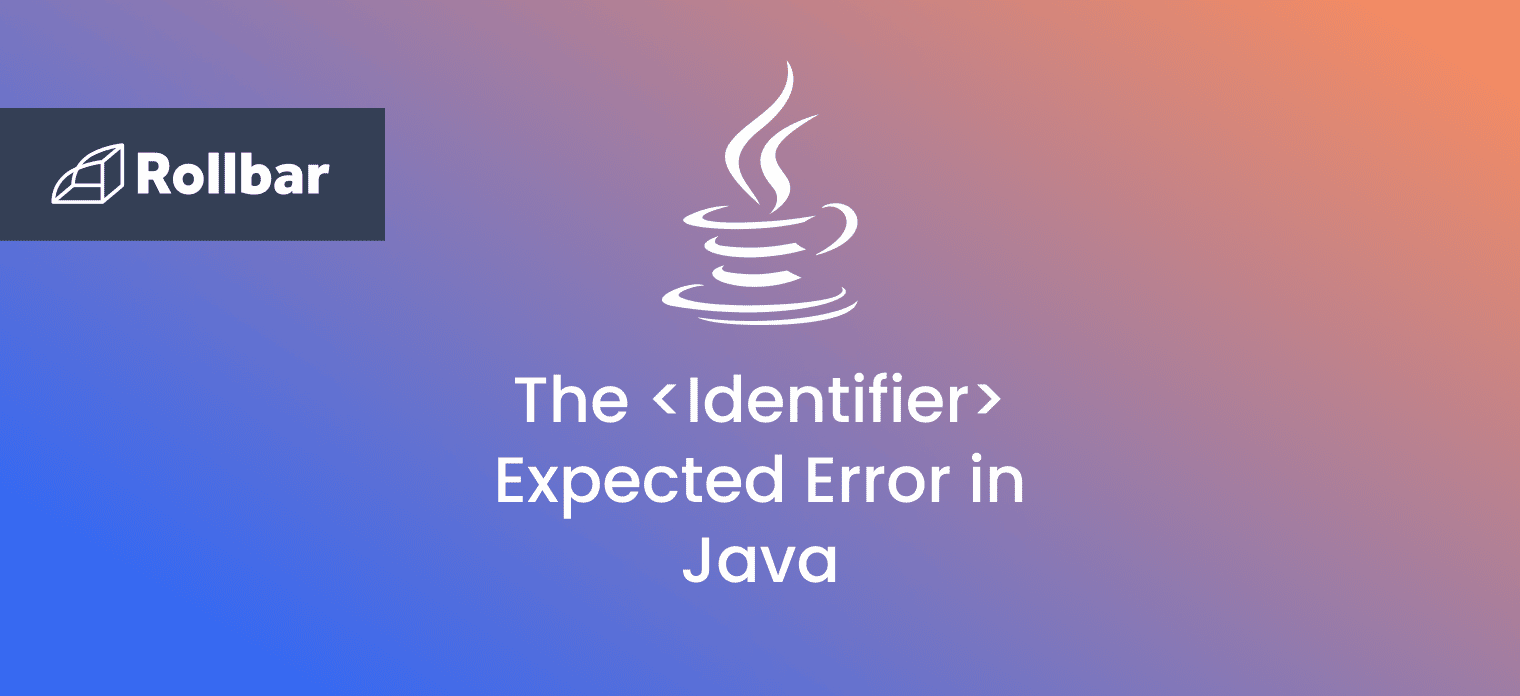Introduction to Symbol Tables
Symbol tables are an important data structure created and maintained by compilers to store information associated with identifiers [1] in a given source code. This information is entered into the symbol tables during lexical and syntax analysis and is used in the later phases of compilation. As the declarations of classes, interfaces, variables, and methods are processed, their identifiers are bound to corresponding entries in the symbol tables. When uses of these identifiers are encountered in the source code, the compiler looks them up in the symbol tables and relies on this information for things such as verifying that a variable has been declared, determining the scope of a variable, and verifying that an expression is semantically correct with type checking. Symbol tables are also used for code generation and optimization [2].
A simplified representation of a symbol table entry (or simply, a symbol) in Java has the following format: <symbol name (identifier), type, scope, [attributes]>. Given a global variable declaration like final double ratio; the corresponding symbol would then be <ratio, double, global, [final]>.
Install the Java SDK to identify and fix exceptions
Cannot Find Symbol Error
As its name implies, the cannot find symbol error refers to a symbol which cannot be found. While there are multiple ways and reasons this can occur, they all boil down to the fact that the Java compiler is unable to find the symbol associated with a given identifier.
The message produced by the compiler for the cannot find symbol error includes two additional fields:
- “symbol”—the name and type of the referenced identifier; and
- “location”—the specific class in which the identifier has been referenced.
What Causes the Cannot Find Symbol Error
The most common triggers for the cannot find symbol compile-time error include:
- missing variable and method declarations;
- out-of-scope references to variables and methods;
- misspelled identifiers; and
- omitted import statements.
Cannot Find Symbol vs Symbol Not Found vs Cannot Resolve Symbol
As different Java compilers use slightly different terminology, the cannot find symbol error can also be found under the terms symbol not found and cannot resolve symbol. Besides the naming, there is no difference between what these terms stand for.
Cannot Find Symbol Error Examples
Undeclared variable
When the Java compiler encounters a use of an identifier which it cannot find in the symbol table, it raises the cannot find symbol error. Consequently, the most common occurrence of this error is when there is a reference to an undeclared variable. Unlike some other languages that don’t require explicit declaration of variables [3], or may allow declaring a variable after it has been referenced (via hoisting [4]), Java requires declaring a variable before it can be used or referenced in any way.
Fig. 1(a) shows how an undeclared variable, in this case the identifier average on line 9, results in two instances of the cannot find symbol error, at the positions where they appear in the code. Declaring this variable by specifying its data type (or, alternatively, inferring its type with the var keyword in Java 10+) resolves the issue (Fig. 1(b)).
(a)
1
2
3
4
5
6
7
8
9
10
11
12package rollbar;
public class UndeclaredVariable {
public static void main(String... args) {
int x = 6;
int y = 10;
int z = 32;
average = (x + y + z) / 3.0; // average is not declared
System.out.println(average);
}
}UndeclaredVariable.java:9: error: cannot find symbol
average = (x + y + z) / 3.0;
^
symbol: variable average
location: class UndeclaredVariable
UndeclaredVariable.java:10: error: cannot find symbol
System.out.println(average);
^
symbol: variable average
location: class UndeclaredVariable
2 errors(b)
1
2
3
4
5
6
7
8
9
10
11
12package rollbar;
public class UndeclaredVariable {
public static void main(String... args) {
int x = 6;
int y = 10;
int z = 32;
double average = (x + y + z) / 3.0;
System.out.println(average);
}
}16.0
Out of scope variable
When a Java program tries to access a variable declared in a different (non-inherited or non-overlapping) scope, the compiler triggers the cannot find symbol error. This is demonstrated by the attempt to access the variable counter on lines 17 and 18 in Fig. 2(a), which is accessible only within the for statement declared on line 11. Moving the counter variable outside the for loop fixes the issue, as shown on Fig. 2(b).
(a)
1
2
3
4
5
6
7
8
9
10
11
12
13
14
15
16
17
18
19
20
21
22
23package rollbar;
import java.util.Arrays;
import java.util.List;
public class OutOfScopeVariable {
public static void main(String... args) {
final List<String> strings = Arrays.asList("Hello", "World");
final String searchFor = "World";
for (int counter = 0; counter < strings.size(); counter++) {
if (strings.get(counter).equals(searchFor)) {
break;
}
}
if (counter < strings.size()) {
System.out.println("The word " + searchFor + " was found at index " + counter);
} else {
System.out.println("The word " + searchFor + " wasn't found");
}
}
}OutOfScopeVariable.java:17: error: cannot find symbol
if (counter < strings.size()) {
^
symbol: variable counter
location: class OutOfScopeVariable
OutOfScopeVariable.java:18: error: cannot find symbol
System.out.println("The word " + searchFor + " was found at index " + counter);
^
symbol: variable counter
location: class OutOfScopeVariable
2 errors(b)
1
2
3
4
5
6
7
8
9
10
11
12
13
14
15
16
17
18
19
20
21
22
23
24package rollbar;
import java.util.Arrays;
import java.util.List;
public class OutOfScopeVariable {
public static void main(String... args) {
final List<String> strings = Arrays.asList("Hello", "World");
final String searchFor = "World";
int counter;
for (counter = 0; counter < strings.size(); counter++) {
if (strings.get(counter).equals(searchFor)) {
break;
}
}
if (counter < strings.size()) {
System.out.println("The word " + searchFor + " was found at index " + counter);
} else {
System.out.println("The word " + searchFor + " wasn't found");
}
}
}The word ‘World’ was found at index 1
Misspelled method name
Misspelling an existing method, or any valid identifier, causes a cannot find symbol error. Java identifiers are case-sensitive, so any variation of an existing variable, method, class, interface, or package name will result in this error, as demonstrated in Fig. 3.
(a)
1
2
3
4
5
6
7
8
9
10
11
12
13
14package rollbar;
public class MisspelledMethodName {
static int fibonacci(int n) {
if (n == 0) return 0;
if (n == 1) return 1;
return fibonacci(n - 1) + fibonacci(n - 2);
}
public static void main(String... args) {
int fib20 = Fibonacci(20); // Fibonacci ≠ fibonacci
System.out.println(fib20);
}
}MisspelledMethodName.java:11: error: cannot find symbol
int fib20 = Fibonacci(20);
^
symbol: method Fibonacci(int)
location: class MisspelledMethodName(b)
1
2
3
4
5
6
7
8
9
10
11
12
13
14package rollbar;
public class MisspelledMethodName {
static int fibonacci(int n) {
if (n == 0) return 0;
if (n == 1) return 1;
return fibonacci(n - 1) + fibonacci(n - 2);
}
public static void main(String... args) {
int fib20 = fibonacci(20);
System.out.println(fib20);
}
}6765
Missing import statement
Using classes, either from the Java platform or any library, requires importing them correctly with the import statement. Failing to do so will result in the cannot find symbol error being raised by the Java compiler. The code snippet in Fig. 4(a) makes use of the java.util.List class without declaring the corresponding import, therefore the cannot find symbol error occurs. Adding the missing import statement (line 4 in Fig. 4(b)) solves the problem.
(a)
1
2
3
4
5
6
7
8
9
10
11package rollbar;
import java.util.Arrays;
public class MissingImportList {
private static final List<String> CONSTANTS = Arrays.asList("A", "B", "C");
public static void main(String... args) {
System.out.println(CONSTANTS);
}
}MissingImportList.java:6: error: cannot find symbol
private static final List<String> CONSTANTS = Arrays.asList("A", "B", "C");
^
symbol: class List
location: class MissingImportList(b)
1
2
3
4
5
6
7
8
9
10
11
12package rollbar;
import java.util.Arrays;
import java.util.List;
public class MissingImportList {
private static final List<String> CONSTANTS = Arrays.asList("A", "B", "C");
public static void main(String... args) {
System.out.println(CONSTANTS);
}
}[A, B, C]
Less common examples
The root cause for the cannot find symbol Java error can occasionally be found in some unexpected or obscure places. Such is the case with accidental semicolons that terminate a statement ahead of time (Fig. 5), or when object creation is attempted without a proper constructor invocation which has to have the new keyword (Fig. 6).
(a)
1
2
3
4
5
6
7
8
9
10package rollbar;
public class LoopScope {
public static void main(String... args) {
int start = 1, end = 10;
for (int i = start; i <= end; i++); {
System.out.print(i == end ? i : i + ", ");
}
}
}
LoopScope.java:7: error: cannot find symbol
System.out.print(i == end ? i : i + ", ");
^
symbol: variable i
location: class LoopScope
LoopScope.java:7: error: cannot find symbol
System.out.print(i == end ? i : i + ", ");
^
symbol: variable i
location: class LoopScope
LoopScope.java:7: error: cannot find symbol
System.out.print(i == end ? i : i + ", ");
^
symbol: variable i
location: class LoopScope
3 errors(b)
1
2
3
4
5
6
7
8
9
10package rollbar;
public class LoopScope {
public static void main(String... args) {
int start = 1, end = 10;
for (int i = start; i <= end; i++) {
System.out.print(i == end ? i : i + ", ");
}
}
}1, 2, 3, 4, 5, 6, 7, 8, 9, 10(a)
1
2
3
4
5
6
7
8package rollbar;
public class ObjectCreation {
public static void main(String... args) {
String s = String("Hello World!");
System.out.println(s);
}
}ObjectCreation.java:5: error: cannot find symbol
String s = String("Hello World!");
^
symbol: method String(String)
location: class ObjectCreation
(b)
1
2
3
4
5
6
7
8package rollbar;
public class ObjectCreation {
public static void main(String... args) {
String s = new String("Hello World!");
System.out.println(s);
}
}Hello World!Other causes for the cannot find symbol error may include:
- using dependencies with old or incompatible versions;
- forgetting to recompile a program;
- building a project with an older JDK version;
- redefining platform or library classes with the same name;
- the use of homoglyphs in identifier construction that are difficult to tell apart;
- etc.
Conclusion
The cannot find symbol error, also found under the names of symbol not found and cannot resolve symbol, is a Java compile-time error which emerges whenever there is an identifier in the source code which the compiler is unable to work out what it refers to. As with any other compilation error, it is crucial to understand what causes this error, pinpoint the issue and address it properly. In the majority of cases, referencing undeclared variables and methods, including by way of misspelling them or failing to import their corresponding package, is what triggers this error. Once discovered, resolution is pretty straightforward, as demonstrated in this article.
Track, Analyze and Manage Errors With Rollbar

Managing errors and exceptions in your code is challenging. It can make deploying production code an unnerving experience. Being able to track, analyze, and manage errors in real-time can help you to proceed with more confidence. Rollbar automates error monitoring and triaging, making fixing Java errors easier than ever. Sign Up Today!
References
[1] Rollbar, 2021. Handling the <Identifier> Expected Error in Java. Rollbar Editorial Team. [Online]. Available: https://rollbar.com/blog/how-to-handle-the-identifier-expected-error-in-java/. [Accessed Nov. 22, 2021].
[2] ITL Education Solutions Limited, Principles of Compiler Design (Express Learning), 1st ed. New Delhi: Pearson Education (India), 2012.
[3] Tutorialspoint.com, 2021. Python - Variable Types. [Online]. Available: https://www.tutorialspoint.com/python/python_variable_types.htm. [Accessed: Nov. 23, 2021].
[4] JavaScript Tutorial, 2021. JavaScript Hoisting Explained By Examples. [Online]. Available: https://www.javascripttutorial.net/javascript-hoisting/. [Accessed: Nov. 23, 2021]








